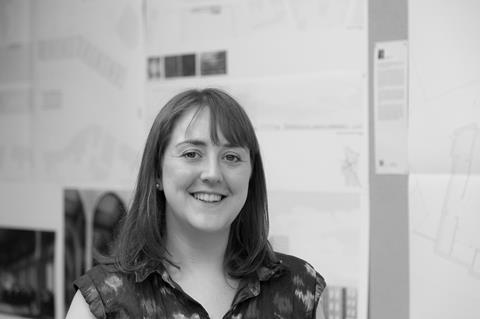We have an opportunity to re-stitch some of the professional fabric we have so determinedly unravelled and rise to the challenges of the 2020s, writes Eleanor Jolliffe

The last couple of centuries of our profession have been marked by a fear of losing “territory”; fear of diversity of practice; fear that if we hold our professional definition loosely we shall lose it altogether.
This pursuit of purity, and restriction of definition of what an architect is, does not make for a glorious history. However, now there is an opportunity to re-stitch some of the professional fabric we have so determinedly unravelled.
In 1791 a group of architects met at The Thatched House Tavern in London to create The Architect’s Club. It was the beginning of our route to “professionalisation” and, for all that it was formed in the ideals of raised professional standards and protecting clients, it also sought protectionist and exclusive definitions to shelter these architects from the growth of the industrial revolution and imperial expansion. It ended up mostly as an exclusive dining club, but the era spawned many others like it.
The RIBA was intended as the force that would professionalise and formalise the profession of architecture
In 1834, after a scandalous, petty and embarrassing tussle between the Institute for Architects and the Society for Architects and Surveyors largely centred around distancing architects from builders, the RIBA was formed (though the royal charter did not come until 1837). It was intended as the force that would professionalise and formalise the profession of architecture.

From its earliest days it sought to raise competence, formalise the educational route, police architectural competitions and, perhaps most crucially to its founder members, be the gatekeepers of the profession – limiting access to those they considered worthy.
1958年,世界大战结束,帝国几乎结束,这个职业再次回应了一个不断变化的世界,通过一个教育会议,建筑教育将成为纯粹的学术天才的专利,为那些拥有更多技术技能和较低学历的人创造了一个二级技术路线。
They cleaved the profession in half, trying to protect what they saw as the essential intellectual role of the architect for those they considered to be of suitably high calibre.
The decades of work to protect and closely define architects looked like it was working. In the late 1950s and through the 1960s architects were in what many consider to have been a golden age, with publicly employed architects enacting utopian ideals and rebuilding bomb-damaged cities; enjoying a level of power, influence and autonomy all but unrivalled in the profession’s UK history.
Architects became lumped in with the unscrupulous and faceless government departments and developers at the centre of some of the larger scandals of the 1970s
However, the questionable wisdom of architects working largely remote from builders’ end users and increasingly distanced from technical skills soon came to an inevitable conclusion, with technical failures and corruption seeing a backlash against public building programmes and architectural styles.
Architects became lumped in with the unscrupulous and faceless government departments and developers at the centre of some of the larger scandals of the 1970s. By the early 1990s, with reduced public building need, it was all too easy to privatise architectural services with little public dissent.
Since the 1990s the professional press and opinion has loudly critiqued the power that it has lost, all the while sub-contracting out skills and services that had been the traditional preserve of the architect to a small army of consultants. All the talent and knowledge that gave architects their leading role on site in the distant past is largely no longer taught in architectural schools.
Very few architects could take up a chisel as the medieval master masons (the architects of their day) could do. Very few architects do any of their own engineering or material calculations. Few of us even chose to undertake the principal designer role under CDM – though RIBA saw this as a huge potential growth area for fees when it was introduced.
We have given away our own territory and contracted out our own skills – all the while seeking a purity of definition for “architect” that never existed in the first place
We have given away our own territory and contracted out our own skills – all the while seeking a purity of definition for “architect” that never existed in the first place. The ancient Greeks so respected their polymath skilled architects that the term “to architect” was used by both Plato and Aristotle to denote an application of great knowledge in practical ways for the common good.
Our modern definition – “a person who designs buildings and in many cases also supervises their construction” (Oxford Languages) – is so tight that we are strangling ourselves.
The ARB is currently conducting a review and potential overhaul of architectural education; the government is reconsidering the regulation of the architectural sector in line with the upcoming Building Safety Bill, and we are facing a climate emergency and redefinition of our global relationships as a result of Brexit. We could let this pass in calls for further exclusivity, protection of function or for “regaining territory”.
However, if I had any say in this, and – to be clear – I don’t, I would use this moment to call for an expansion of the architect’s basic skills, a greater diversity of definitions of practice, greater technical and construction knowledge and less exclusivity in educational routes.
Our historic calls for purity and restricted access have weakened us. I would call for an embrace of the diversity of knowledge that our forebears were so intimidated by, and for architects to rise to the challenges of the 2020s.
当我意识到我还需要学习多少技能,需要做多少工作才能达到更高的标准时,我可能会后悔的。但我想我的客户和我的建筑的最终用户不会。
















8Readers' comments